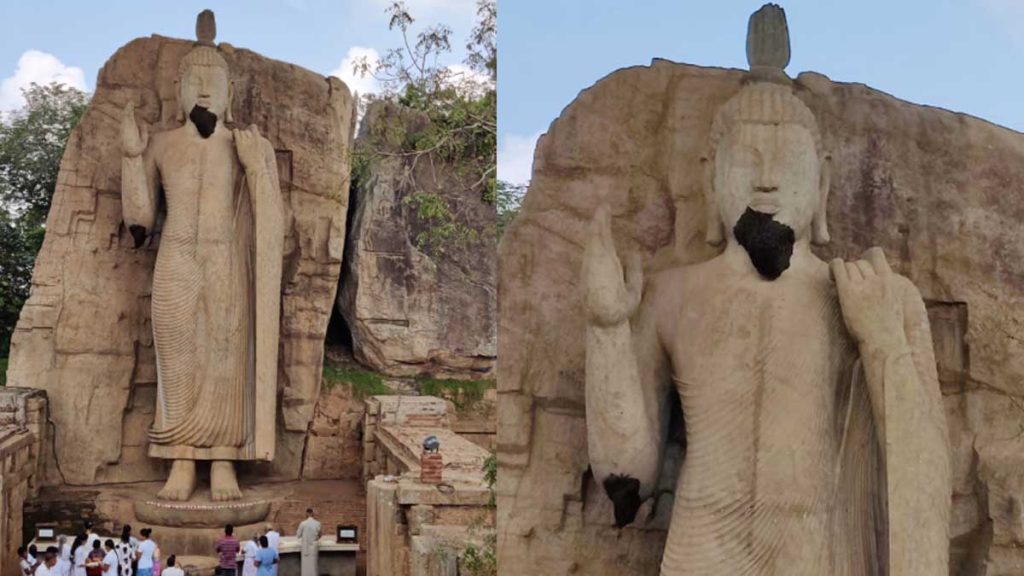Among the historical creation during the Anuradhapura Era the standing Statue of Aukana Buddha stand out as very renowned and venerated one. This is one of the masterpieces of sculpture erected by the famous king Dhatusena, who ruled the country in the 5th century AD. Unfortunately today it faces possible destruction by wasp nests that have been visible in 12 places of the statue.
Immediate prevention action is needed to be taken before the great sculpture could damage further by this wasp invasion.
It got its name because it is located in the village of Aukana, which is located near Kala Lake. This Buddha statue, built in the form of standing on a padmasana, is 38 feet and 10 inches high on the granite rock. Abhaya Mudra is formed in the right hand while the left hand holds the wave of the robe. According to the uniform method, the robe has a rhythmic wave pattern and it can also be seen clinging to the body. It can be seen that the single wave in the robe, characteristic of the Anuradhapura period Buddha statues, has been well polished in this statue as well.
Some scholars are reluctant to accept this Buddha statue as the work of King Dhatusena, but Professor Senarath Paranavithana is of the opinion that this is the work of King Dhatusena.
Faces are oval shaped and the eyes are thought to express deep emotions. It is widely believed that the inscriptions seen on the top of the head had fallen to the ground and were fixed later. According to the inscriptions found here, it can be considered that the Padmasana of the Aukana idol belongs to the eighth and ninth centuries.
Many scholars and the elderly believe that this Buddha statue is not Gautama Buddha but Dipankara Buddha. Because although the Buddha statues that reflect Gautama Buddha are usually eighteen cubits tall, this one is taller than that. Scholars are of the opinion that this represents the Abhaya Mudra and thus reflects that Dipankara Buddha.
It is shown that the characteristics found in the Amaravati Buddha statues, which show the excellence in the art of ancient India, can also be seen in the Aukana Buddha statue.
As for the designer of the Aukana Buddha statue, it can be considered that he had a thorough knowledge of the human figure. Also, considering the verticality of this idol, the most surprising fact is that a drop of water falling on the nose falls right in the middle of the two legs. Another point of similar excellence is the parallelism seen in the body’s curves. When we consider how even the fingernails are shown in a granite, we can undoubtedly come to a conclusion that how much the designer must have understood the human figure.
